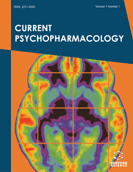Abstract
Background: Psychiatric disorders related to fear and anxiety are common throughout the world, and their neurobiological mechanisms are not fully understood. Studying animal models has been a common strategy to probe mechanisms of normal and pathological brain functioning. Experimental paradigms originally developed with mammalian models, such as predator exposure, fear learning, exposure to predator-related olfactory cues and novelty, have been aquatically tailored for a newer model in translational neuroscience, the zebrafish.
Objective: Our aim was to explore the utility of zebrafish models of fear and anxiety and to describe currently employed experimental paradigms, as well as relevant behavioral endpoints and biomarkers.
Conclusion: We conclude that zebrafish are a promising model to help elucidate the underlying mechanisms related to fear and anxiety. This is partly due to robust behavioral and endocrine responses, pharmacological sensitivity, ease of genetic manipulation, and amenability to high-throughput screening due to low-cost and small size. However, the zebrafish is a relatively new model and further research is needed to truly exploit the potential of this aquatic species.
Keywords: Zebrafish, fear, anxiety, predator, novelty, cortisol, biomarkers.
Graphical Abstract
Current Psychopharmacology
Title:Zebrafish Models to Study Fear and Anxiety
Volume: 5
Author(s): Adam D. Collier and David J. Echevarria
Affiliation:
Keywords: Zebrafish, fear, anxiety, predator, novelty, cortisol, biomarkers.
Abstract: Background: Psychiatric disorders related to fear and anxiety are common throughout the world, and their neurobiological mechanisms are not fully understood. Studying animal models has been a common strategy to probe mechanisms of normal and pathological brain functioning. Experimental paradigms originally developed with mammalian models, such as predator exposure, fear learning, exposure to predator-related olfactory cues and novelty, have been aquatically tailored for a newer model in translational neuroscience, the zebrafish.
Objective: Our aim was to explore the utility of zebrafish models of fear and anxiety and to describe currently employed experimental paradigms, as well as relevant behavioral endpoints and biomarkers.
Conclusion: We conclude that zebrafish are a promising model to help elucidate the underlying mechanisms related to fear and anxiety. This is partly due to robust behavioral and endocrine responses, pharmacological sensitivity, ease of genetic manipulation, and amenability to high-throughput screening due to low-cost and small size. However, the zebrafish is a relatively new model and further research is needed to truly exploit the potential of this aquatic species.
Export Options
About this article
Cite this article as:
Collier D. Adam and Echevarria J. David, Zebrafish Models to Study Fear and Anxiety, Current Psychopharmacology 2016; 5 (2) . https://dx.doi.org/10.2174/2211556005666160608124610
| DOI https://dx.doi.org/10.2174/2211556005666160608124610 |
Print ISSN 2211-5560 |
| Publisher Name Bentham Science Publisher |
Online ISSN 2211-5579 |
 22
22
- Author Guidelines
- Bentham Author Support Services (BASS)
- Graphical Abstracts
- Fabricating and Stating False Information
- Research Misconduct
- Post Publication Discussions and Corrections
- Publishing Ethics and Rectitude
- Increase Visibility of Your Article
- Archiving Policies
- Peer Review Workflow
- Order Your Article Before Print
- Promote Your Article
- Manuscript Transfer Facility
- Editorial Policies
- Allegations from Whistleblowers
- Announcements


























